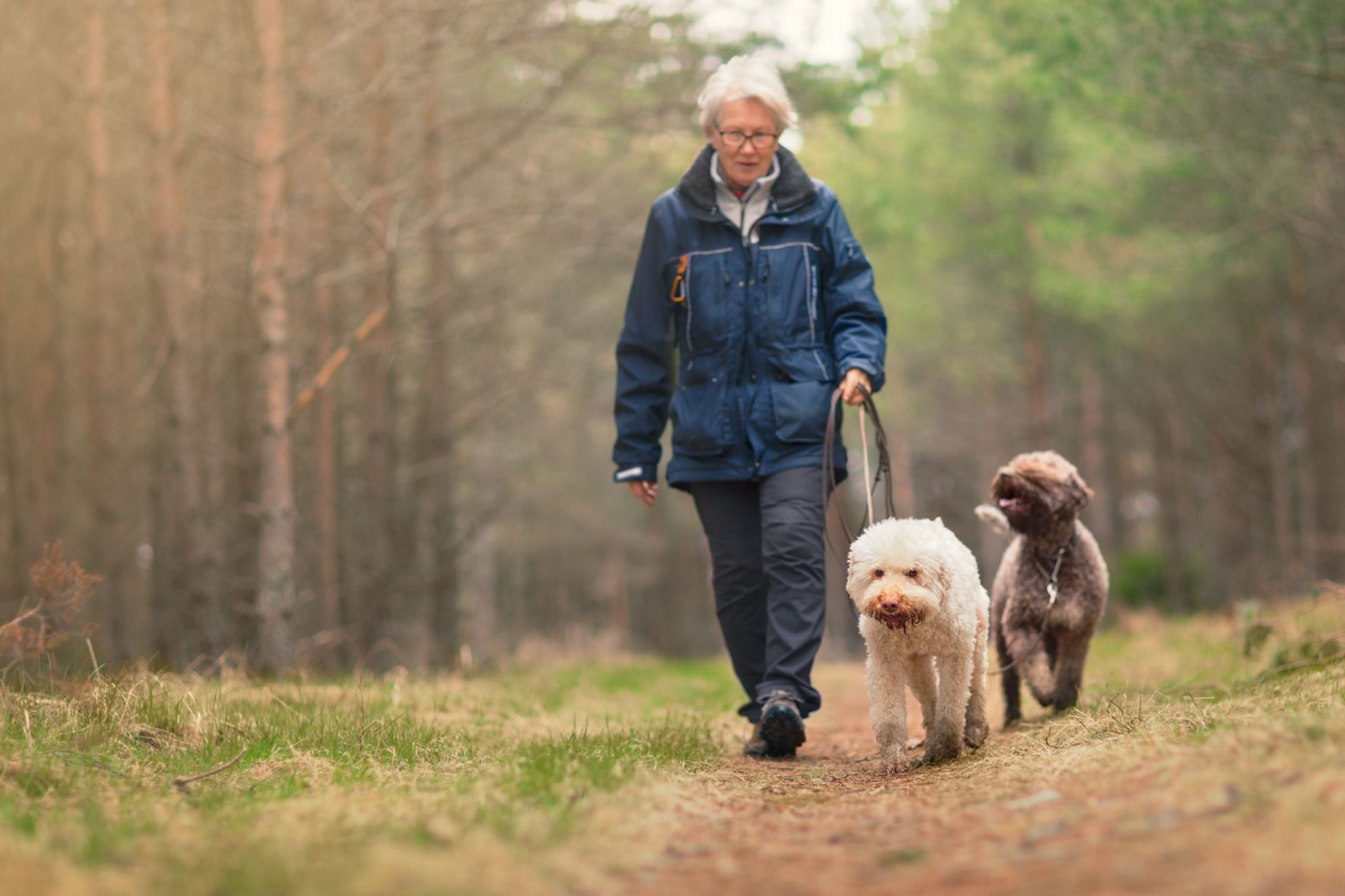The Importance of Walking Your Dog

Regular exercise is essential for a dog’s health and well-being. It’s essential to provide your dog with plenty of opportunities to exercise, whether through walks, runs, playtime, or other activities. Another benefit? It gives you a chance to get moving and stay healthy too!
The Importance of Exercise to Your Dog’s Health
These are some of the key reasons why exercise is essential for dogs:
Maintaining a healthy weight. Regular exercise helps to burn calories and maintain a healthy weight. Just like in humans, obesity can lead to a variety of health problems in dogs, so it’s important to keep your dog at a healthy weight.
Promoting good joint health. Exercise helps to keep your dog’s joints strong and flexible, reducing the risk of joint problems and arthritis.
Improving cardiovascular health. Regular exercise can help to strengthen your dog’s heart and lungs, reducing the risk of heart disease and other cardiovascular problems.
Reducing anxiety and stress. Exercise can be a great way to relieve anxiety and stress in dogs, helping them to feel more relaxed and content.
Building and maintaining muscle mass. Regular exercise can help to build and maintain muscle mass, which is vital for a dog’s overall health and mobility.
Providing mental stimulation. Exercise provides mental stimulation for dogs, which is important for their overall well-being. Dogs need mental stimulation to stay happy and healthy, and exercise is a great way to provide this.
The specific exercise needs of your dog will depend on factors such as breed, age, and health status, so it’s a good idea to consult with your veterinarian to develop an appropriate exercise plan for your dog.
Why It’s Important to Walk Your Dog
Walking your dog is an excellent form of exercise that provides physical and mental benefits. It’s a chance to bond with your dog, give them the exercise they need, and reinforce good behavior. All you need is a leash and a willingness to go for a walk.
Walking is a low-impact exercise that is easy on a dog’s joints, making it an excellent option for dogs of all ages and fitness levels. Your walks together can be customized to meet your dog’s individual needs. You can adjust the distance, pace, and terrain to meet your dog’s needs.
The benefits of walking your dog go beyond the physical. Walking provides mental stimulation for your dog as they explore their environment, sniff new smells, and interact with other dogs and people. Walking your dog regularly can help establish a consistent routine, which can benefit their overall well-being.
Taking walks together allows you to bond with your dog. It’s an opportunity to spend quality time together and build a strong relationship. It also gives you a chance to work on obedience training and reinforce good behavior by practicing commands like “sit,” “stay,” and “heel.”
How to Leash Train Your Dog
Leash training is an essential skill for any dog owner. Here are some steps to help you leash-train your dog:
Choose the right equipment. Invest in a sturdy leash and collar or harness appropriate for your dog’s size and breed.
Introduce the leash. Introduce your dog to the leash by letting them sniff and become familiar with it. Then, attach the leash to your dog’s collar or harness and let them drag it around the house for a few minutes.
Start walking. Start by walking your dog in a low-distraction area like your backyard or a quiet street. Use a treat or toy to lure your dog to walk beside you.
Use positive reinforcement. Reward your dog with treats or praise when they walk calmly on the leash. If your dog pulls on the leash, stop walking and wait for them to return to your side. Then reward them with a treat or praise.
Be patient. Leash training takes time and patience. It’s important to be consistent and persistent with your training. Gradually increase the distance and duration of your walks as your dog becomes more comfortable on the leash.
Avoid punishment. Avoid using punishment, such as jerking the leash or yelling, as this can make your dog fearful and anxious. Positive reinforcement is the best way to train your dog.
Practice often. The more you practice, the better your dog will become at walking on a leash. Aim to walk your dog at least once a day, or more if possible.
Leash training takes time and patience, and every dog is different. Some dogs may take longer to leash train than others, but with consistent training and positive reinforcement, any dog can learn to walk calmly on a leash.
If you need help with leash training, consider enrolling in a training class or working with a professional dog trainer for additional support.
If you have questions about your pet’s exercise needs, please call us at (916) 726-2334. The team at Sunrise Boulevard Animal Hospital looks forward to helping you with all your dog’s health and wellness needs.
